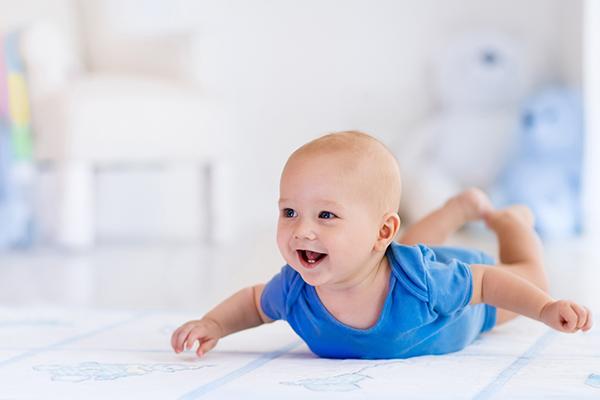Cleft Lip
The "cleft lip", which is defined as a congenital anomaly, is a condition that occurs due to the inability of the structures that will form the lip and the face during the first 4-8 weeks of pregnancy. Familial predisposition may cause an increased risk of this problem, which is one of the most common congenital anomalies.
Cleft Palate
The "cleft palate", which is a congenital anomaly, is a problem caused by the inability to combine the structures that will form the palate around the 12th week in the womb. It also increases the risk of familial predisposition for cleft palate, which can occur in all races.
Although it is sad for parents that their baby was born with this anomaly, it should be noted that the cleft lip and cleft palate problem can be corrected.
What Are the Types of Cleft Lips?
- Microform cleft: This type of lip has a small notch.
- Incomplete (single or double-sided): These clefts form clefts where the base of the nose is not fully involved.
- Complete (single or double-sided): These are the clefts that cover the base of the nose.
- What are the Types of Cleft Palate?
- Complete: Situations where the soft and hard palate are affected together.
- Incomplete: Only clefts where the soft palate is affected.
- Bilateral clefts: A condition in which there are clefts on both sides of the structure called a vomer.
- Submucous cleft: A condition in which there is no cleft when viewed from the outside, but the muscles do not join.
What Are the Causes of Cleft Lip and Cleft Palate?
During the second and third months of pregnancy, the tissues that normally form the lip and palate fuse together. However, in infants with cleft lip and cleft palate, this process either does not occur at all or occurs incompletely. However, no definitive factor known to cause this condition can be shown. Genetic and environmental factors are thought to cause it. As a result, any condition that may affect the development of the fetus in the womb such as heredity, infections, use of drugs, smoking, alcohol, and radiation can cause a cause.
At What Age Do Cleft Lip and Cleft Palate Treatment Begin? How to Treat Cleft Lip?
Treatment begins as soon as you are born. First of all, a detailed examination and then genetic analyses are carried out by the pediatrician. It is extremely important to start orthodontic treatment for the cleft lip immediately. In addition, these babies should be closely monitored in terms of weight gain, nutrition, and development. Surgical treatment is applied after the necessary preparations are completed.
At What Age is Cleft Lip Surgery and Cleft Palate Performed?
Although it is necessary to act as soon as the baby is born for a cleft lip treatment, the surgery must be performed around 3 years of age. The "rule of 10s" should also be considered when deciding on surgery. In other words, if the weight of the baby is above 10 pounds (approximately 4-4.5 kg), the age is less than 10 weeks, and the blood iron level (hemoglobin) is above 10 gr/dl, it is not inconvenient to perform surgery.
The appropriate period for cleft palate surgeries is when the baby is 9-12 months old.
How Is Cleft Lip Surgery Performed?
Although different techniques are applied for a cleft lip treatment, the method, which is basically defined as flap surgery, involves muscle repair with the method of shifting the tissues. The cleft can be closed by advancing the tissue from the cleft side and turning the tissues from the non-cleft side. Since there is a simultaneous nasal deformity, nasal cartilage can also be shaped. The surgery can be completed in approximately 1-2 hours.
The risk will be minimized by plastic surgeons and anesthesiologists who specialize in this procedure, which involves as much risk as any surgery.
How Is Cleft Palate Surgery Performed?
Although there are different techniques, it is performed by pulling the tissues from the edges to cover the middle cleft. Flap surgery is the basis of the surgery. It is important to turn the blood supply of the tissues without deterioration. Repairs are carried out in 3 layers. When viewed through the mouth, first the nasal side (nasal base) is repaired, then muscle repair is performed as it should be from where the palate muscles, which provide the main speech function, are held incorrectly. Finally, the most superficial part of the oral mucosa is repaired. The remaining openings in the edges will self-close over time. In addition, necessary controls are performed by ENT specialists before surgery in these children and tubes can be inserted in the same surgery if necessary.
What Should Be Care After Cleft Lip Surgery?
Since the child is still very young, parents have important duties after the surgery. In this process, it is important not to make the child cry and to provide nutrition as soon as possible as described. It will calm the child to be close to the mother. In addition, intermittent steam applications may be useful in those with nasal obstruction. It is important to prevent the child from reaching the sutures and to dress appropriately.
How to Take Care After Cleft Lip Surgery?
Tongue edema and breathing problems or short-term bleeding in the mouth may occur after cleft palate surgeries. For this reason, it is necessary for the parents to be in close contact with the child and to keep them under observation, especially within the first 24 hours. It is important for the child to get plenty of water within the first 24 hours and to clean and nourish the inside of the mouth. If necessary, intravenous support can also be provided. Steam may also be used to relax breathing. After the third day, you can start drinking drinks such as broth and juice. Gradual transition to solid food is possible, and after 3-4 weeks, the child will be able to eat as before.

